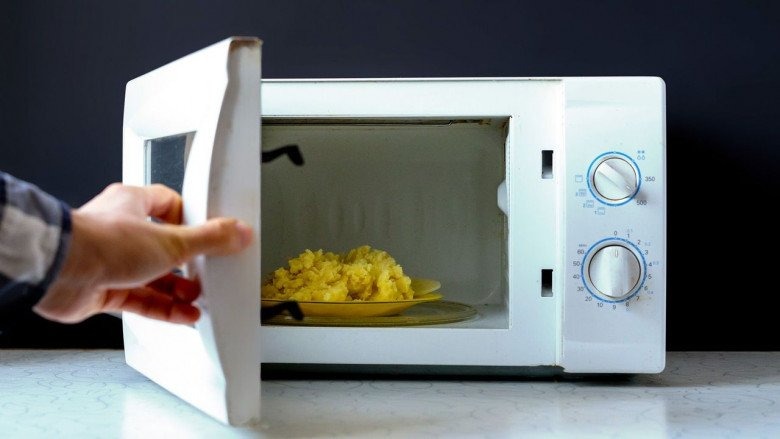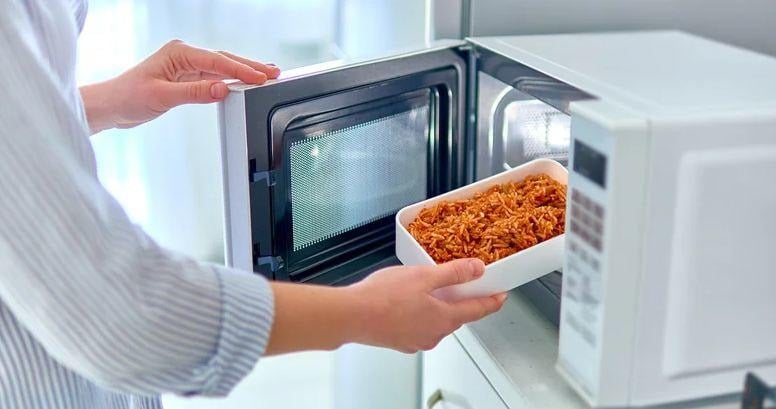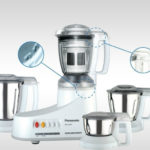The microwave oven is a familiar appliance in many households, but not everyone knows how to use it properly. Microwaves are one of the most popular home appliances, quickly warming food using microwave radiation.
Typically, it only takes 1 to 3 minutes to reheat food from the fridge and enjoy it. However, despite its convenience, there are some considerations for effective microwave use.
Should You Keep the Microwave Door Open or Closed After Use?
There are two schools of thought regarding whether to keep the microwave door open or closed after use. Some people believe that closing the door immediately prevents accidents, keeps the space tidy, and prevents dust and insects from entering.
On the other hand, others argue that after reheating food, the inside of the microwave is still hot, moist, and filled with food odors, so it’s best to leave the door open to let the moisture and smells escape. So, which method is correct?

There are differing opinions on whether to keep the microwave door open or closed after use.
According to Ben Hilton, an expert with 30 years of experience in home and kitchen appliance care in the US, leaving the microwave door open after use is unnecessary. The door hinges can be damaged by impact, and it may even break or damage the interlock switch.
Additionally, keeping the door open can waste energy, especially for microwaves with interior lights, as the light will stay on as long as the door is ajar.
Therefore, there is no need to keep the microwave door open after reheating food. If you’re concerned about odors, moisture, or dirt inside, use a soft cloth or paper towel to wipe down the interior before closing the door.
Common Mistakes When Using a Microwave
Opening the Microwave Door While in Use
Microwaves operate at high temperatures, and opening the door during operation can cause heat to escape, posing a burn risk. Food inside can also splatter, causing injury. So, only open the door once the cycle is complete and the beep sounds.
Placing the Microwave on Top of the Fridge or Oven
Putting the microwave on top of the fridge or oven can shorten its lifespan. These appliances generate heat during operation, and placing the microwave in this position prevents effective heat dissipation, damaging electronic components. Moreover, in the event of a fire or explosion, having the appliances close together can worsen the situation and make it harder to control.

Placing the microwave on top of the fridge or oven can be detrimental to its longevity.
Using the Microwave for Sterilizing Cloth Items
Using the microwave to sterilize cloth items like towels, clothes, or tablecloths is not recommended. High temperatures can lead to explosions and fires, so it’s best to stick to traditional sterilization methods like boiling water.
Putting Inappropriate Food and Materials Inside
Not all foods and materials are suitable for microwave use. Canned foods, bottled water, whole eggs, and hard-shelled animals should be avoided, as they can alter flavors or lose nutrients. Especially, do not boil water or heat liquids like soup or broth in the microwave, as this can be dangerous. Also, refrain from using polystyrene, plastic containers, or plastic bags in the microwave.
Neglecting Regular Cleaning
Failing to clean your microwave regularly can result in food buildup and greasy residue, causing odors, reducing its lifespan, and increasing energy consumption. Adjust your cleaning frequency based on usage: clean weekly for frequent use, every two weeks for occasional use, and monthly for infrequent use.




































